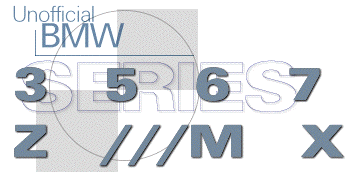|
Ron Stygar Carl Buckland Dale Beuning Forums Help
From digest.v7.n438 Tue Oct 14 18:44:47 1997 From: Ron Katona <ron3b_at_cris.com> Date: Tue, 14 Oct 1997 18:25:30 -0400 Subject: Re: Supercharging
Prakash Maggan wrote: Experience no, comments yes. I looked into this and did a lot of snooping around on Miata mail lists, web pages, and news groups to get the low down. The final verdict on the Sebring was somewhat mixed. The quality of the kit was generally praised, as was Downing Atlanta's (distributor) service and willingness to stand behind their kits. Performance, however, varied. The problem with their kit comes from a lack of intercooler combined with the least efficient compressor available - the Roots type supercharger. A lot of people assume turbos create more charge heat. They do not. Compressor efficiency is the key to keeping the heat down because physics determines how much air will heat up as it is compressed. 8 psi is 8 psi, but a less efficient compressor will cause more heat to be developed during the compression process. Turbos are still more efficient than the best superchargers, thus producing less intake charge heat. Notice I don't say underhood heat, a turbo may create more heat there, but not in the intake charge. A good cool air source outside the engine compartment is therefore a must for a good turbo setup. Sebring claims they've overcome these shortcomings, but I wonder. Some of the things Miata owners related to me was that the Sebring has inconsistent performance in weather. That's a sign that intake charge heat is a problem. Another was that aftermarket ignition retard systems were needed to prevent detonation in some cases - another indication of charge heat problems. The M42/44 does have knock sensors that should make such ignition mods unnecessary, but they will be working overtime to keep up with the demands of the inefficient supercharger. In other words, Sebring is relying on the stock BMW electronics to keep detonation from occurring. Performance will be inconsistent as a result. Companies like ERT generally use more efficient compressors, intercoolers, and custom electronics to re-map the fuel curve to prevent detonation. The Sebring kit relies on a rising rate fuel pressure regulator on the fuel return line to increase fuel flow during the injector pulses. It's imprecise, and given the potential charge heat related problems, it's not an elegant solution. Sebring advertises something like 8 psi and 200 HP for their kit. However, with the heat problems, I doubt you'll see that on anything other than ideal days. In hot weather, the knock sensors will be doing their thing, and power will be reduced. I can't comment on reliability since the stock BMW electronics are pretty darn good. They may just keep everything together. I don't want to risk it. I've driven a 318ti with the Mosselman Turbo kit. (In fact, it was the very turbo pictured on the Turner Motorsports 318ti Club Sport, sold used to a third party) Very nice. Yes, it still relies on a return line fuel pressure regulator, however, its' more efficient compressor, intercooler, and lower boost give a lot more peace of mind. Power is seamless and lag is nil (really). Feels like a 2.5l 6 in both smoothness and power curve. Low end torque was dramatically improved. A Mosselman with custom Jim C. electronics replacing the fuel pressure stuff would be the hot setup, although the car I drove was doing quite well without a new chip. I wonder also how close some old standard hot-rodding things like porting, polishing, cams, chip, intake, exhaust, could come to 180-185 HP naturally aspirated. Would this be cheaper?? Anyway, YMMV, etc., but I would not put a Sebring on my BMW.
|

